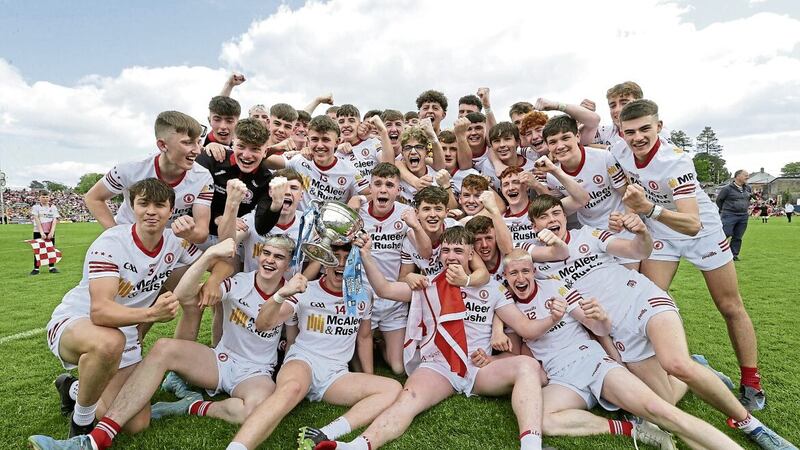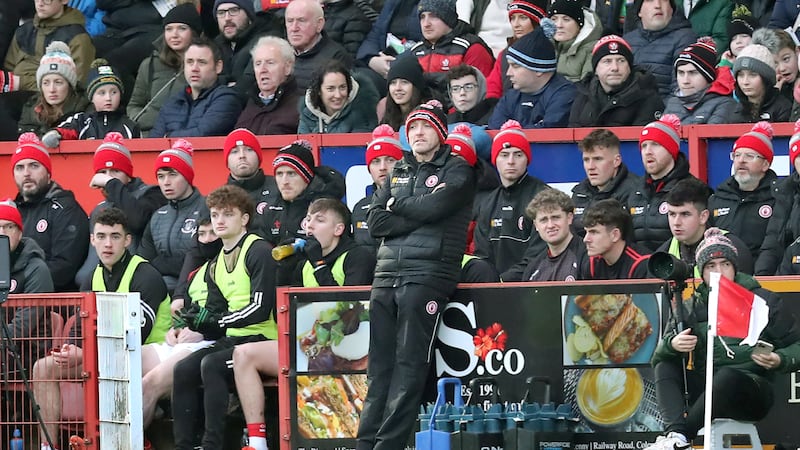OVER the last decade, the GAA has commissioned no fewer than five different reports that either directly or indirectly dealt with issues around its underage grades.
There was the Report Taskforce on Player Burnout, headed by Dr Pat O’Neill.
Then there was a ‘Mobilising Forces’ report in 2012, the famous ESRI report on ‘Keeping Them In The Game’ (2013) and a Minor Review Workgroup Report (2015), before Paraic Duffy’s 2017 paper on Player Overtraining and Burnout.
Pat O’Neill’s report suggested abolishing U18 and U21, replacing them with a single U19 grade.
The other three internal reports came to the same conclusion – that the inter-county minor grade had to be changed to U17 and that players had to be completely removed from all adult competition.
ESRI’s report was commissioned by the GAA but they had less say over what it contained. Still, that hasn’t stopped them from bending the numbers to suit.
Historically, the GAA’s biggest cliff-edge has always been at 18. It’s when most players leave school, many of them moving away to university, the rest heading into the working world.
In February of this year, with the debate set to hit the floor of Congress, GAA Director of Coaching and Games Development Shane Flanagan told The Irish News that the study told them there was a 50 per cent drop-off rate between the ages of 16 and 19.
Flanagan said that the GAA had “identified through our research [quoting the ESRI report and a 2016 retention study that identified ages 15-17 as the greatest drop-off age in all sports]… 15, 16, 17 is our biggest issue in terms of drop-off."
Yet the ESRI report didn’t break the numbers down any further than the 16-19 bracket.
There’s nothing in the ESRI report that says the GAA has a bigger drop-off at 15, 16 or 17 than it has at 18 or 19.
Where was the evidence for a claim that was basically the entire basis for the argument of keeping it at U17?
The other thing the previous five reports and this latest one have in common is that they were predominantly about the inter-county grades.
If the GAA wants to have U17 inter-county and U20, grand.
It’s not great. u18 would be better. The gap between U17 and senior inter-county is enormous and in terms of a pathway it feels counter-productive. But the inter-county game isn’t the issue here.
Of the latest Age Grades Task Force’s 22-slide PowerPoint presentation made to counties last week, only the last six even danced around the nettle.
Counties were presented three options for club games that they will now debate.
The first is to leave club minor games at U17. The second is a voluntary return to U18 based on a county’s own preference, and the third a mandatory return on a national scale.
Yet the report fails to properly deal with any of the actual issues.
Ahead of last year’s Annual Congress, when a motion on allowing counties the autonomy to return to U18 if they wished was to be debated, an Irish News survey found that only two of 26 counties that responded were going to vote against the motion.
Of the other 24, at least 19 said they would support the motion, with the rest leaning towards it in some shape or form.
Perhaps fearing being dragged down a path, the GAA suggested pulling the motions to allow counties to return to U18 if they wished in favour of the task force being formed and a Special Congress in the autumn.
That Special Congress has since been cancelled.
The GAA says that was “to give clubs and counties the time to properly discuss the issue with their relevant stakeholders."
It’s not a matter for a full Congress though. The debate is too big to shoehorn in with everything else.
This latest report makes it inadvertently clear that the reasons presented for changing to U17 in the first place were nonsense.
In offering to move back to U18 but insisting that if counties choose to do so, U18s would be banned from adult club.
So, for argument’s sake, if counties go with the option of setting their own grades and Derry stay U17 and Tyrone go U18, 17-year-olds can play adult in Derry but not in Tyrone.
Where does the player welfare argument sit on that one?
Top-end players being pulled from pillar to post wasn’t helping them nor anyone they played for, but the number of people in that position is absolutely minute. A fraction of a percentage.
Yet their needs were placed before the needs of not just their peers but entire clubs.
In order to protect those handful of players, they left 16-year-olds out of underage football with nowhere to go and nothing to play.
They’re not nearly ready for senior, even reserves would be beyond most at that stage and U19/20/21 competitions only work for big clubs with big numbers.
The GAA’s biggest failing in all of this has been their absolute refusal to accept they’ve made such a grave error.
It’s very unusual for counties to keep pushing back on a policy change this long after it’s happened. Most big decisions come in like a lion and out like a lamb.
But this hits different. People care deeply about it because it goes not only to the heart of their clubs but to their own families and their children.
Parents steeped in it, men that were really good players and whose offspring ought to have a genetic advantage, are looking at their sons of 16 years of age feeling exasperated that when this season ends, they will have nothing left to play.
The task force looked at some measures around inter-county football but basically washes its hands of dealing with the club problem.
The report concedes there are differences between rural and urban clubs, but there are no measures suggested to deal with that.
The tone of it is that as long as fixtures are decoupled and that minors can’t play adult games, who really cares what it ends up looking like.
In noting that “one size fits all may not be the best approach”, it at least gets one thing right.
At senior club level, there is an issue over the use of minor players. It is only ever want and impatience, not necessity.
Senior clubs may want their minor players, but they don’t need them.
Even so, it’s exceedingly rare that an U18 would play adult championship nowadays.
But it’s a very different scenario at the bottom of the food chain.
A ban on U18s playing adult club creates serious issues for smaller rural clubs.
I’ve used the example of my own first game back after Covid-19 when, at 32 years of age, I was the ninth oldest player on our team. We had 17 players for championship this year. Our next crop with any numbers are still U15.
It is a pressing situation.
What really needs to happen here is for the GAA to put its two hands up and admit it has made an awful mistake, one that will have lasting consequences if it is not reversed.
The debate here shouldn’t even be about U17 or U18. It should be U18 or U18.5, and whether you go school years or January 1 birthdays. There are social advantages to going with school years that can have a massive impact in offsetting drop-off.
That’s the kind of thing the Task Force should have been looking at.
But in truth, once more the report is about the inter-county age grades and the importance of this, that and the other for county teams and development of elite players.
It has done virtually nothing to deal with the issue for clubs.
Instead it has attempted to reinforce a top-down approach fed to counties by reports that are obsessed with the tiny percentage of players that are overloaded with too many different teams.
The change was wrong and it will always be wrong.







